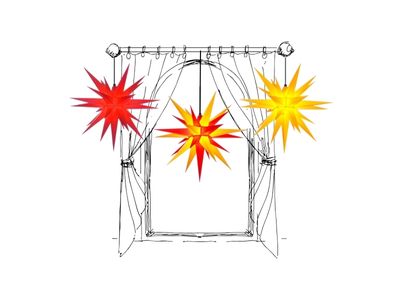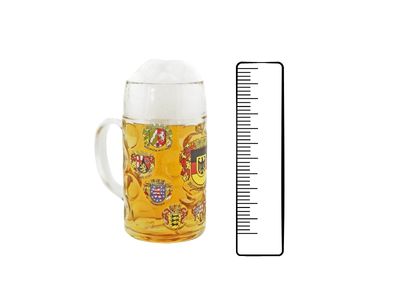Cuckoo Clock Setup and Troubleshooting Guide
Set-Up & Trouble Shooting
earn how to set up and troubleshoot your Black Forest cuckoo clock. Looking for other German traditions? See our guides on German Incense Smokers and Christmas Pyramids.
How to Set Up Your Black Forest Cuckoo Clock
Learn step-by-step how to unpack, hang, and start your authentic German cuckoo clock.
Unpacking the Clock (Video Tutorial)
Watch how to safely remove your cuckoo clock from its packaging and prepare it for setup.
Download our Set-up PDF
If you have any questions, please do not hesitate to contact us through our website using our Contact Us Page.
Night Shut-Off
Most cuckoo clocks allow you to silence the cuckoo call manually. The switch is usually found on the side or underneath the clock case. If the switch is down, the cuckoo will call during both the day and night. To turn the cuckoo call off, simply move the switch up.
Many 8-day cuckoo clocks with music include an automatic night shut-off. In this mode the clock keeps time normally, but the cuckoo and music are silenced between 9:00 PM and 8:00 AM. Quartz (battery) cuckoo clocks often have a built-in light sensor that automatically turns off the cuckoo and music when the room is dark.
Automatic Night Shut-Off Positions
-
Up position – Manual On: The clock runs with cuckoo and music active.
-
Middle position – Automatic: The cuckoo and music are silenced between 9:00 PM and 8:00 AM.
-
Down position – Manual Off: The cuckoo and music remain completely off.
⚠️ Please do not move the lever or stick while the cuckoo is calling or music is playing.
Winding Your Cuckoo Clock
The weights power the mechanical movement of your cuckoo clock.
-
1-Day movement: Weights must be pulled up once every day.
-
8-Day movement: Weights are pulled up about once per week.
How to wind: Gently pull the chain to raise each weight. You may push up slightly on the weight with your hand to relieve pressure while pulling the chain. Always pull slowly, evenly, and without jerking to protect the clockwork.
As your clock runs, the weights move steadily downward. If you switch off the cuckoo or music, the weights for those functions will not move.
How to Troubleshoot Your Cuckoo Clock
Clock Does Not Run or Keep Time
Watch this short 2-minute video for easy steps to get your cuckoo clock running accurately again. Learn how to check the pendulum and setup so your authentic Black Forest clock keeps perfect time.
The Cuckoo Is Not Calling
Watch this quick 1-minute video to learn why your cuckoo bird may not be calling. We’ll show you the simple checks and adjustments to get your Black Forest cuckoo clock sounding properly again.
Troubleshoot Clock Hands and Number of Calls
This 4-minute video shows you how to adjust the hands on your cuckoo clock and correct the number of calls. Learn step-by-step how to keep your Black Forest cuckoo clock striking accurately on the hour and half hour.
The Music Does Not Work
In this 3-minute advanced tutorial, learn how to troubleshoot the music box on your cuckoo clock. We’ll walk you through common issues and adjustments so your authentic Black Forest cuckoo clock can play its melodies again.
Troubleshooting Tips
Why is my cuckoo clock running too fast?
If your clock runs ahead of time, move the pendulum slightly downward. This slows the clock.
Why is my cuckoo clock running too slow?
If your clock lags behind, move the pendulum slightly upward. This speeds up the clock.
Why is the cuckoo not calling?
-
Make sure all shipping clips and protective gong paper have been removed.
-
Check that the night shut-off switch is set to ON.
-
For clocks with automatic night shut-off, confirm it is not in the “night phase” (9:00 PM to 8:00 AM).
Why does my cuckoo clock make a noise a few minutes before the hour?
It is normal to hear a slight mechanical sound about 5 minutes before the clock strikes. This is part of the movement preparing for the cuckoo call and strike. It is not a defect.
Why does my clock not strike exactly on the hour or half hour?
The minute hand may not be correctly positioned:
-
Allow the clock to strike the hour, then stop the pendulum.
-
Loosen the screw on top of the hands with flat-nosed pliers, noting how the disks are assembled.
-
If the minute hand is not riveted, adjust it, tighten the screw, and test.
-
If it is riveted, carefully adjust the square rod with pliers, then test again.
-
Repeat until the strike is correct.
Why does my cuckoo clock stop after a short time?
The pendulum may not be aligned with the clockwork:
-
Tilt the clock slightly right or left until the tick sounds even.
-
Remove the pendulum and gently bend the pendulum stick in the needed direction.
-
Rehang the pendulum and test. Repeat until the clock runs evenly.
Why does the gong sound tinny?
There may not be enough space between the gong spring and the hammer:
-
Open the back of the clock and move the hammer head back about 1 mm (less than 1/16").
-
If the gong spiral is too close to the back plate, carefully pull it out slightly.
General Care and Maintenance
Black Forest cuckoo clocks are durable and easy to maintain. To keep your clock in good condition:
-
Dust gently with a soft, dry paintbrush.
-
Have the movement checked and oiled by a clockmaker every 3–4 years.
-
Hang your clock at normal room temperature and avoid damp areas or direct heat (like above a fireplace).
-
Handle gently — cuckoo clocks are delicate, not toys, and weights or chains may be damaged if pulled roughly.
For a full step-by-step maintenance guide, see our blog: How to Care for Your Black Forest Cuckoo Clock











